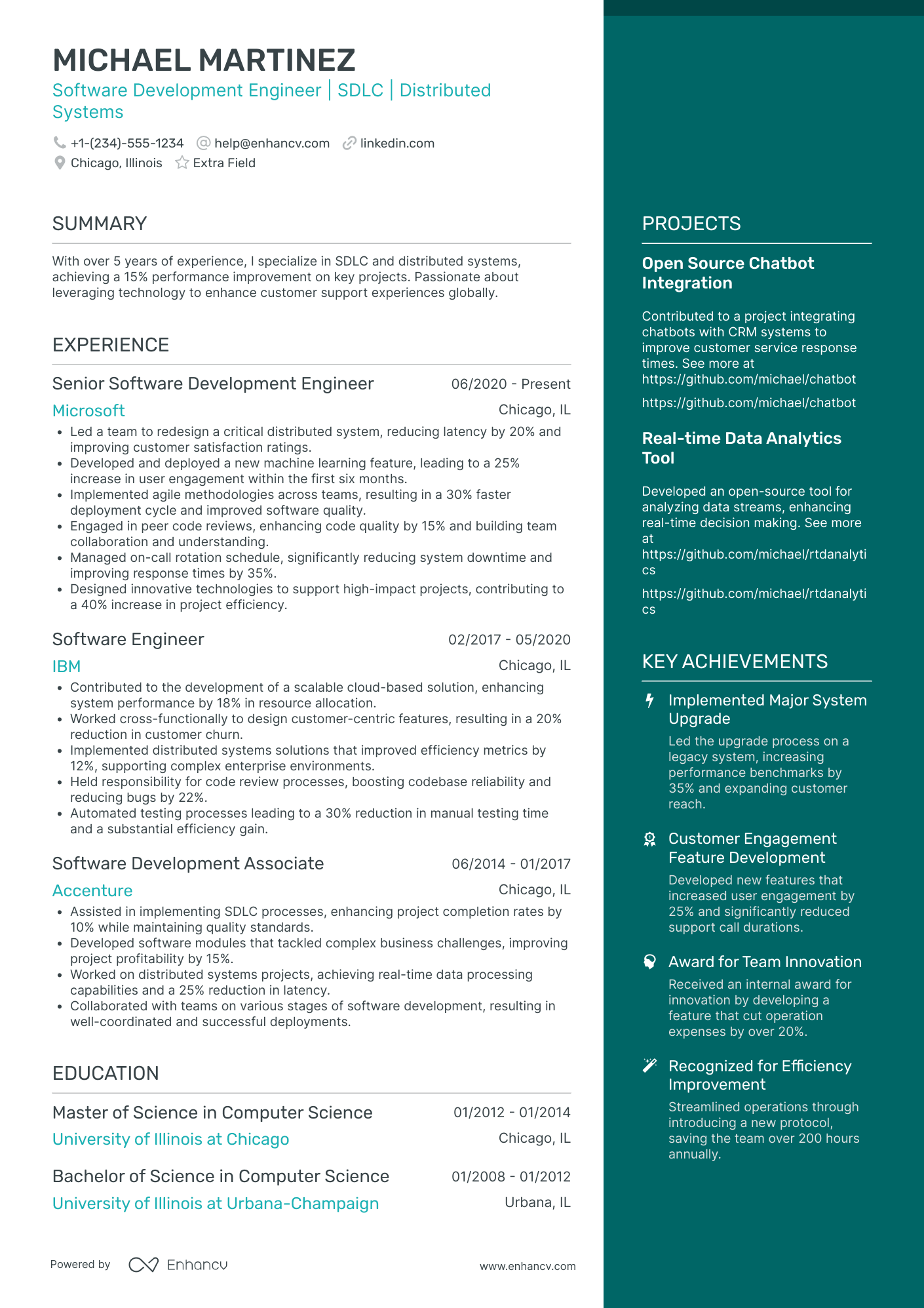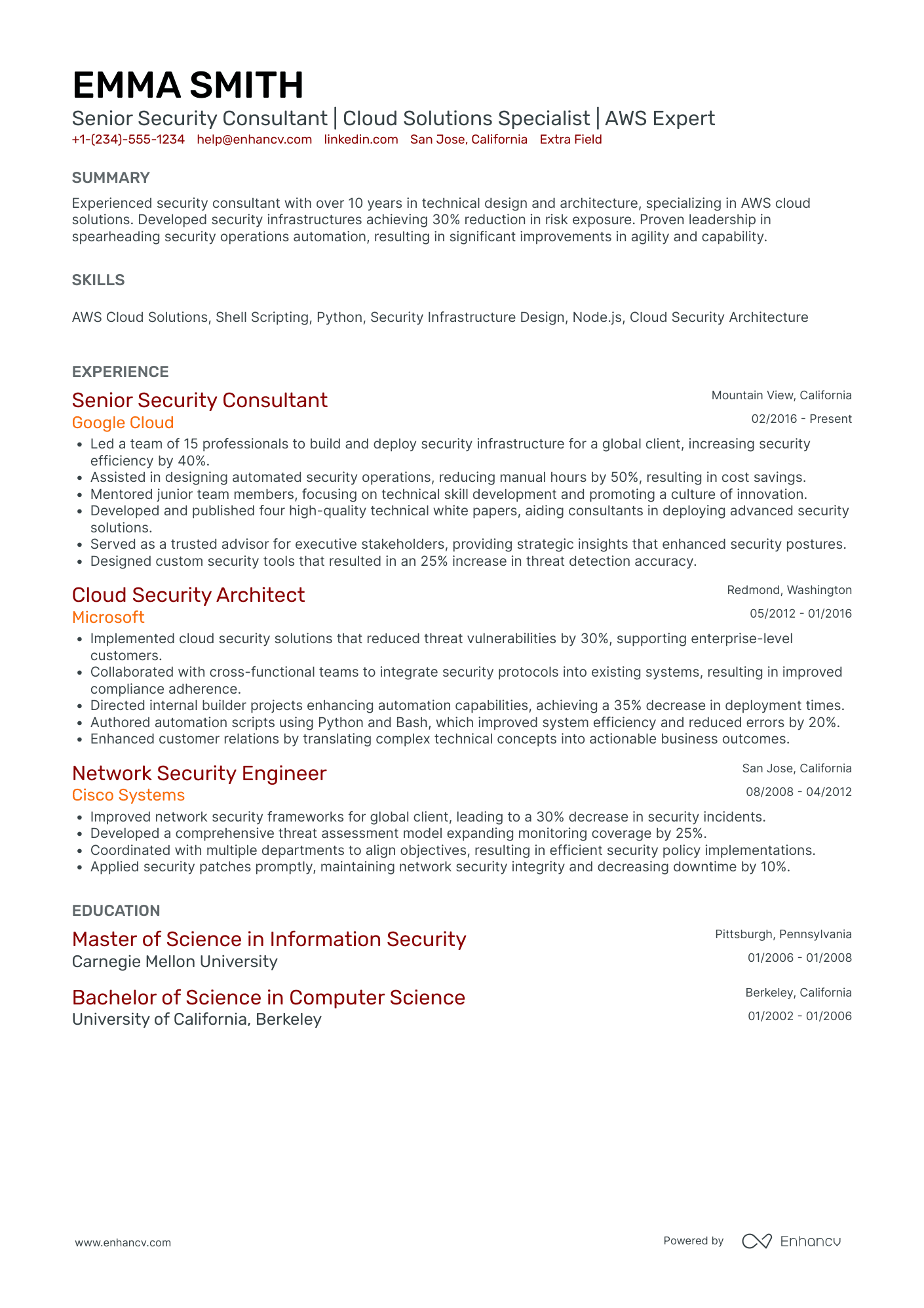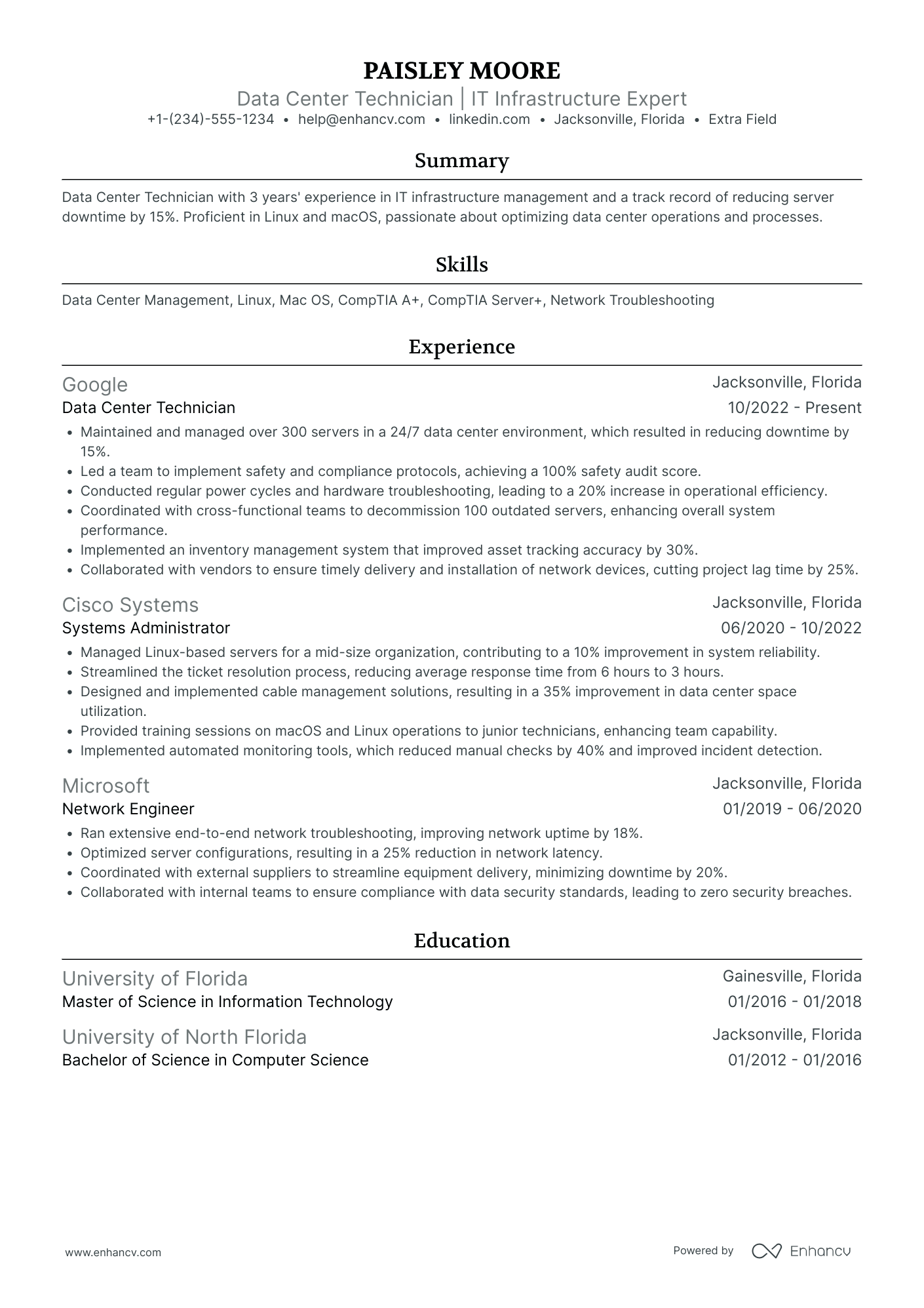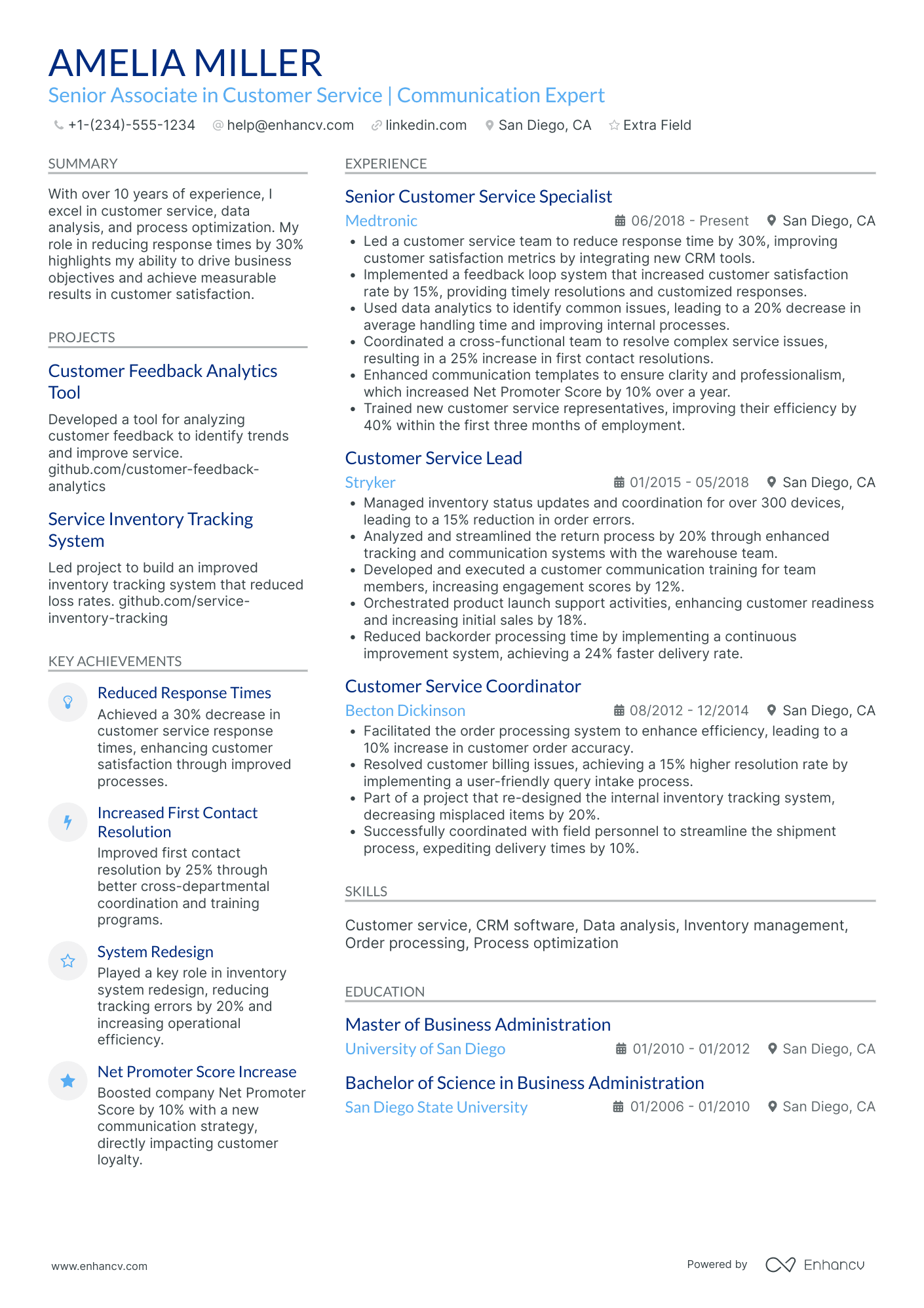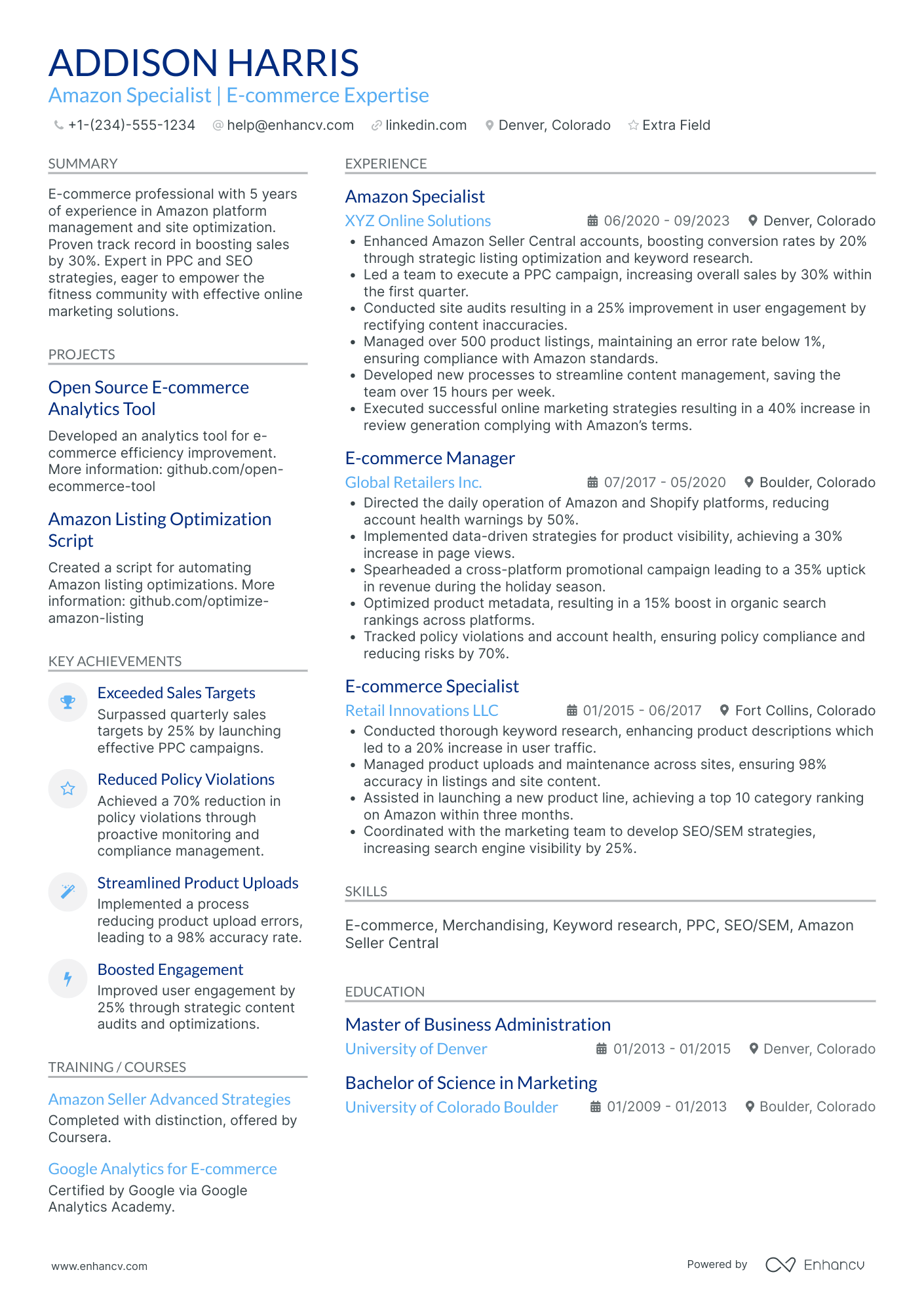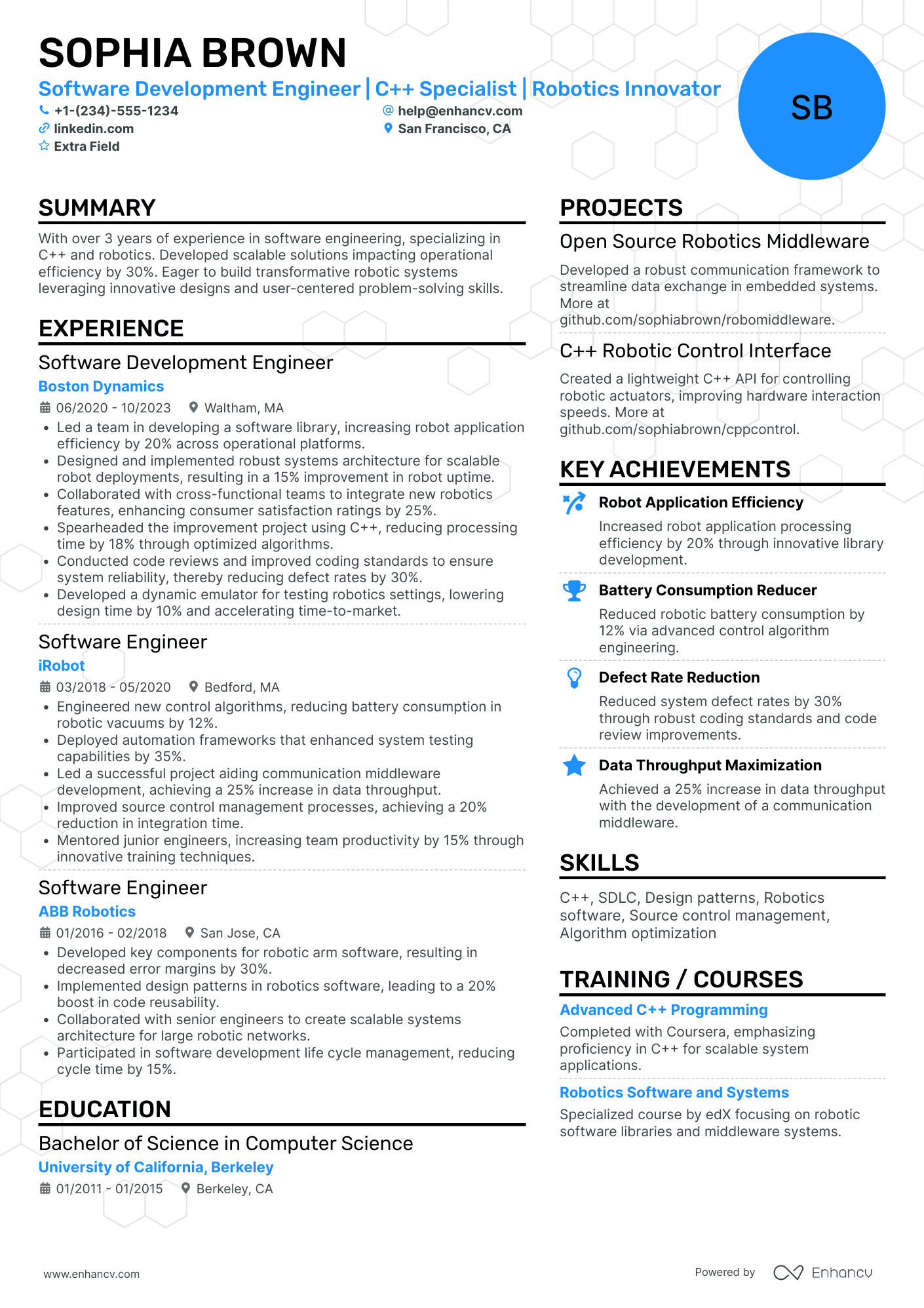With Amazon’s employee base spanning over 1.5 million people globally, building a resume highlighting both niche expertise and a strong cultural fit is essential but tricky. The challenge is making sure every line reflects Amazon’s well-known focus on customer service and innovation, while still letting your unique skills shine.
The competition, however, doesn’t stop there. Amazon’s rapid growth and high turnover rates mean they’re always seeking fresh talent in a fast-paced, tech-savvy environment. This guide dives into creating a resume that stands out by balancing role-specific requirements with Amazon’s overarching values.
Whether you’re looking to show off your prowess with advanced tools or your commitment to the company’s customer-focused ethos, we’ll help you tailor your Amazon resume to keep pace with one of the world’s biggest players in e-commerce.
Key takeaways
- Utilize a reverse-chronological format to highlight career progression, matching Amazon's dynamic roles.
- Tailor your resume by aligning experiences and skills with specific job descriptions to beat ATS (Applicant Tracking Systems) and grab recruiters’ attention.
- Include a mix of technical and soft skills relevant to the Amazon position you’re targeting.
- Emphasize quantifiable achievements in your experience section to showcase your direct impact on previous roles.
- Certifications and education should directly relate to the job requirements, enhancing your profile’s relevance.
- Maintain a professional layout with clear headings, bullet points, and a clean design to ensure readability and a strong first impression.
Let's dive into a practical resume sample tailored for Amazon roles.
Amazon resume sample
Here’s a versatile resume outline that could work for various roles at Amazon. From an Amazon picker to an Amazon area manager, these key sections and elements ensure professional appeal. You can also use our resume builder to create your resume within minutes.
[Your Name]
[Job Title]
([Area Code]) [Phone Number] | [Your.Email]@enhancv.com | @LinkedIn | [Location]
Objective/Summary Statement
Summarize your career goals and what you aim to contribute at Amazon. Tailor this section to highlight your alignment with the specific role you’re applying for, demonstrating your enthusiasm and the value you would bring to the team.
Skills and Qualifications
- Technical Skills: [List relevant skills such as software proficiency, programming languages, etc.]
Work Experience
[Most Recent Job Title]
[Company Name], [Location]
[Month, Year] – Present
- [Bullet point describing your current responsibilities and achievements]
- [Bullet point highlighting any awards or recognitions received]
- [Bullet point illustrating interpersonal skills through specific work situations]
[Previous Job Title]
[Company Name], [Location]
[Month, Year] – [Month, Year]
- [Description of job duties]
- [Key accomplishments]
Education
[Degree or Diploma]
[Institution Name], [Location]
Graduated: [Year]
Certifications and Training
- [Certification Name], [Issuing Organization], [Year]
- [Training Program], [Training Provider], [Year]
Now that you’ve seen a sample structure, let's explore how to format your resume for maximum impact.
How to format an Amazon resume
A successful Amazon resume requires an adaptable and creative approach to match the diversity of roles at the company. Your application should show your qualifications and professionalism, reflecting your attention to detail and readiness for the job. This approach aligns well with Amazon’s values, emphasizing your fit for their dynamic environment.
Key sections for an Amazon resume
Keeping in mind that Amazon offers a wide array of job opportunities, from technical positions to marketing roles, your resume sections can vary.
However, these are the staples:
- Summary/Objective statement
- Skills and Qualifications
- Work Experience
- Education
- Certifications and Training
Further insights on these sections will be discussed later in this guide.
Resume format
The classic reverse-chronological format works for any Amazon role. It features your most recent job first, displaying a clear career progression.
Resume design
Choose a traditional or а simple resume template that maintains a professional image. Opt for a clean and streamlined design, which highlights your organizational skills and attention to detail—key for any position at Amazon.
Here are some concrete tips:
- Aim for a one-page resume to succinctly convey your qualifications. If your background is extensive, consider using a two-column layout.
- Maintain at least one-inch margins to avoid a crowded appearance.
- Choose professional colors like navy or charcoal and pair them with readable fonts such as Helvetica or Arial.
- Employ dividing lines to distinctly separate sections, ensuring your resume is well-organized and easy to navigate.
Resume header
Ensure your contact information is prominently displayed at the top in a clear header.
Here’s what it should include:
- Name, job title, and email address.
- Links to your LinkedIn profile or professional portfolio—particularly important for roles in software development or design.
- A professional headline that succinctly states your specialty, e.g., "Senior Data Analyst Specializing in Consumer Insights at Amazon".
Align your resume with the market’s standards – Canadian resumes may have unique layout guidelines.
Large companies such as Amazon often rely on ATS to filter applications. That’s why it's essential to adapt your resume by incorporating keywords from the job description and maintaining a clear format with well-defined headings and bullet points.
File format and name
Save your resume with a professional filename such as Howard_White_WarehouseWorker in PDF–unless another format is directed in the job posting—to ensure the layout is preserved.
Thoroughly proofread your resume to eliminate errors, showing your attention to detail. Use our AI resume checker to help refine and perfect your application before submission.
Is your resume good enough?
Drop your resume here or choose a file. PDF & DOCX only. Max 2MB file size.
With your format set, the next step is to detail your professional experiences and achievements.
How to write your аmazon resume experience
In your experience section for Amazon roles, it’s crucial to adapt the content to the specific job you’re applying for, whether it’s in software development, project management, marketing, or logistics.
For example, a resume for a software engineering position should detail technical skills, programming languages, and specific projects or products you've developed.
In contrast, a resume for a marketing role should emphasize campaigns you've managed, increases in engagement or ROI, and your expertise in digital marketing tools.
Here are some key elements to include in your experience section regardless of the role:
- Job title, company name, and dates of employment.
- A summary of the role.
- Specific, quantifiable achievements related to the job posting.
- Relevant skills and technologies used.
- Any leadership or collaborative roles in projects.
Let’s see a real job posting. We’ve highlighted the parts we’re going to target in a sample experience section:
Amazon Fulfillment Center Warehouse Associate
Job Overview
You’ll be part of the Amazon warehouse team that gets orders ready for customers relying on Amazon services. Our fast-paced, physical roles take place in a variety of areas including merch, make-on-demand, customer returns, Prime Now, and general fulfillment. You will be selecting, packing, and shipping orders—in some cases, for our super-fast delivery service.
Duties & Responsibilities
- Receive and put away inventory.
- Get customer orders ready and pack them up.
- Load boxes into trucks for shipment.
- Use scanners to read bar codes on products.
- View prompts on screens and follow the directions for some tasks.
- Troubleshoot problems.
- Ensure product meets quality requirements.
- Operate powered industrial trucks (PIT) such as a forklift or pallet driver, and work at heights up to 40 feet. Equipment training and certification are provided free of cost.
You'll also need to be able to:
- Lift up to 49 pounds.
- Push utility carts up to 60 pounds.
- Stand, walk, push, pull, squat, bend, and reach during shifts.
- Use carts, dollies, hand trucks, and other gear to move items around.
- Go up and down stairs (where applicable).
- Work at a height of up to 40 feet on a mezzanine (where applicable).
- Adhere to strict safety, quality, and fulfillment production standards.
Tailoring your resume for each application is essential for several reasons, especially from the recruiter’s perspective.
Here’s why:
- Customized resumes directly address the job description, making it easier for recruiters to see how your experience aligns with the role’s requirements.
- A tailored resume helps recruiters quickly identify key qualifications, reducing the time they spend per application.
- By highlighting relevant skills and experiences, you demonstrate that you understand and can contribute to Amazon’s specific work environment and culture.
This experience section is tailored to the job ad above:
- •Managed inventory and maintained accuracy levels of 98%+ by efficiently receiving and storing merchandise, reducing misplacement incidents.
- •Prepared and packed 150+ customer orders daily, ensuring timely fulfillment for expedited delivery services.
- •Operated a forklift and pallet jacks daily, moving on average 500 boxes per shift, ensuring safe and efficient shipment loading.
- •Used advanced barcode scanners to track product movement, increasing processing speed by 20% over manual methods.
- •Adhered to stringent safety protocols while working at heights of up to 35 feet, resulting in zero safety incidents during employment.
- •Implemented troubleshooting solutions for inventory and shipment discrepancies, improving overall product delivery time by 15%.
It’ll impress recruiters by:
- Detailing the preparation and packing of 150+ orders daily addresses the job's focus on selecting, packing, and shipping orders quickly.
- Including daily forklift and pallet jack operations that match the job description’s requirement for operating powered industrial trucks and working at heights.
- Maintaining zero safety incidents corresponds with the job's requirement for strict adherence to safety standards.
After detailing your experience, let’s focus on how to effectively quantify these accomplishments.
How to quantify your experience on a resume
When applying for any role at Amazon, quantifying your achievements is a highly effective strategy. Specifying measurable outcomes—such as percentage improvements, cost savings, and productivity gains—demonstrates your commitment. This method sets you apart, illustrating your readiness to thrive in Amazon's data-driven environment, regardless of the position.
You can approach numbers on your resume like so:
- Include any quantifiable results from your previous roles, such as an increase in sales figures or efficiency, rather than just stating responsibilities.
- State specific metrics you helped improve at your previous organization, and by what percentage, to demonstrate your impact.
- Detail any projects where you’ve saved the organization money, being specific about the amounts, as this illustrates your business acumen.
- Show any instances where you led a significant software implementation that improved productivity, making sure to provide numbers on the magnitude of improvement.
- Highlight moments where you devised a new process or system that increased output or reduced error rates, giving specific figures to support your claims.
If you lack direct experience, don’t worry–there are ways to demonstrate your potential value to employers.
How do i write an Amazon resume with no experience?
Not every Amazon role is suitable for inexperienced candidates, but there are still plenty of options if you’re just starting out. For those without experience, entry-level positions at Amazon often include on-the-job training and provide a great opportunity to begin a career.
Consider applying for jobs such as:
- Fulfillment Associate: Handling and sorting packages, and preparing orders for delivery.
- Customer Service Representative: Managing customer inquiries, providing product information, and resolving issues.
- Delivery Driver: Delivering packages to Amazon customers for those with a driver’s license.
The biggest challenge in applying for entry-level roles is working around your lack of direct experience.
You can overcome this by focusing on these other aspects:
- Emphasize transferable skills relevant to the job you’re applying for. Consider including both hard skills like data entry and computer literacy and soft skills, such as communication and problem-solving.
- List your most recent educational experiences first. Write your degree, school name, and graduation or expected graduation date.
- If applicable, add coursework that’s relevant to the job.
- Include any school projects, personal projects, or portfolios that illustrate relevant skills and knowledge.
- Show any volunteer experience that has helped you develop skills needed for the job.
- Highlight leadership experience and participation in clubs or sports if applicable.
- Any relevant certifications can be included here.
Present this information in a functional resume format, which gives weight to skills over chronological work history. Pair this format with a compelling resume objective.
Tips for writing an effective objective
- Be specific
- Demonstrate key skills
- Show enthusiasm and direction
- Keep it concise–up to three sentences
Let’s see an example objective statement for a successful Amazon resume:
Next, we'll explore how to present your hard and soft skills effectively.
Optimize your resume summary and objective for ATS
Drop your resume here or choose a file.
PDF & DOCX only. Max 2MB file size.
Amazon resume skills
For a multifaceted company like Amazon, presenting your specific skills in a memorable way helps the hiring team evaluate your suitability for the role, especially when using automated screening tools.
Your skills section contains industry-specific abilities, also called hard skills, gained through education, training, or experience. These are usually quantifiable and teachable. Outline them in a separate section for better visibility, as they’re usually keywords recruiters are looking for.
Take a look at our suggestions:
Best hard skills for your Amazon resume
- AWS (Amazon Web Services)
- Java
- Python
- C++
- Ruby
- JavaScript
- Node.js
- Angular.js
- React.js
- Docker
- Kubernetes
- Terraform
- Jenkins
- SQL
- NoSQL
- Apache Kafka
- ElasticSearch
- DynamoDB
- Amazon RDS
- Amazon Redshift
Soft skills, on the other hand, are interpersonal skills that relate to how you work and interact with others. They’re less tangible and signify your ability to manage work and social situations effectively. These are transferable across different jobs and industries, so it’s best if you embed them within your experience section to illustrate how you have applied them practically.
We recommend including some of these to create a successful Amazon resume:
Best soft skills for your Amazon resume
- Problem-solving
- Leadership
- Communication
- Time Management
- Adaptability
- Teamwork
- Creativity
- Work Ethic
- Attitude
- Decision-making
- Conflict Resolution
- Emotional Intelligence
- Accountability
- Persuasion
- Project Management
- Research
- Resilience
- Curiosity
- Empathy
- Motivation
Now, let’s enhance your resume by focusing on your education and relevant certifications.
How to list your certifications and education on your resume
To construct a compelling education section for an Amazon resume, it’s important to adapt to the requirements of the specific position. Some roles may require a university degree while others a high school diploma or GED might be sufficient.
When detailing your education, include:
- The highest level of education achieved–a High School Diploma, Bachelor of Science, etc. Don’t forget to write details on the major and minor, especially if they’re relevant to the job.
- The name of the institution from which you graduated.
- Your graduation year–or an expected graduation date if you’re still a student.
- For those with higher education, include coursework relevant to the specific role you’re applying for, especially for developer or solution architect roles.
This education entry targets the job posting above:
- •Completed coursework with an emphasis on technical skills and safety management.
- •Participated in extracurricular activities that developed teamwork and leadership skills.
- •Completed comprehensive training in the operation and safety of industrial forklifts, including both theoretical and practical components.
- •Achieved certification through rigorous hands-on assessments and written exams.
- •Trained in advanced safety protocols to ensure secure operations within a high-volume warehouse environment.
Here’s what makes this example effective:
- Directly aligns education with the skills and qualifications specified in the job ad.
- Provides comprehensive details on theoretical and practical aspects of forklift certification.
- Highlights advanced safety training, crucial for warehouse environments.
Certifications for an Amazon resume
When considering what goes into your application, especially for tech roles, it’s smart to underline your relevant certifications upfront. No need to ponder where to get certified, as Amazon offers numerous options for different roles.
Include the name, issuer, and date of each certification, and briefly note the skills they cover—especially if they match the job description. Тhis strategy speaks for your practical, specialized knowledge, often giving you an edge over more general academic qualifications.
Best certifications for your Amazon resume
It’s time to craft a compelling resume summary that captures your unique value.
How to write your Amazon resume summary
When crafting your resume for an Amazon position, the summary section is your chance to shine right from the start. Think of it as your elevator pitch: in just three to five sentences, you need to encapsulate your professional persona, spotlighting the standout achievements and thorough skills you bring to the table.
At Amazon, where innovation, customer focus, and operational excellence are paramount, your summary must reflect how your career journey and achievements align with these core values.
Let’s look at a summary targeting the job posting above:
This resume summary is effective because it concisely aligns with the Amazon warehouse job’s requirements by showcasing the candidate’s relevant experience and specific achievements in inventory management, order fulfillment, and safety adherence.
Finally, let’s consider adding sections that represent your additional skills, languages, or interests.
Additional sections for an Amazon resume
Adding optional sections to your resume can tailor your application to better align with Amazon’s company culture and the specific job requirements, helping you stand out in a competitive field.
Here are some of the best additional sections to consider for a role at Amazon:
- Describe relevant personal or academic projects that showcase skills and experiences applicable to the job.
- Listing awards can highlight your accomplishments and recognition in your field.
- Displaying volunteer experiences can reflect your initiative and commitment to community—traits highly valued at Amazon.
- Mention memberships in relevant professional organizations to show your active participation and commitment to your profession.
- Including attended industry-specific conferences and workshops can illustrate your dedication to staying current in your field.
- Especially for roles that require or benefit from multilingual abilities, listing language skills can be a strong addition.
In conclusion
Armed with these insights, sculpt a resume that opens doors at Amazon and positions you as the ideal candidate by detailing your precision-fit skills and achievements. Let this guide be your blueprint for navigating the competitive landscape of Amazon's employment opportunities.
Amazon resume examples
By Experience
By Role




















